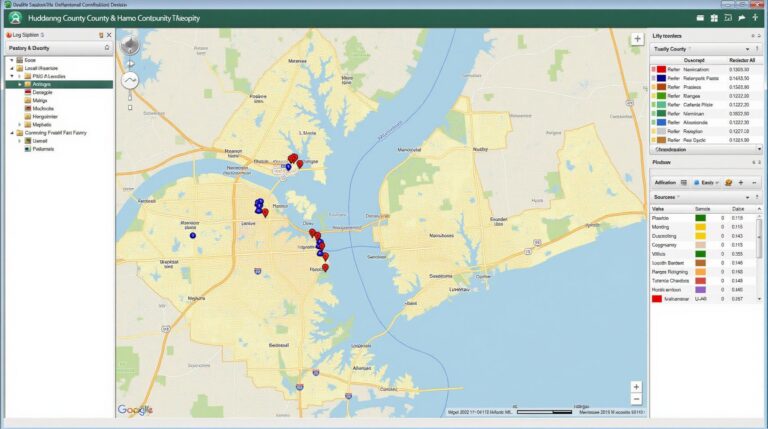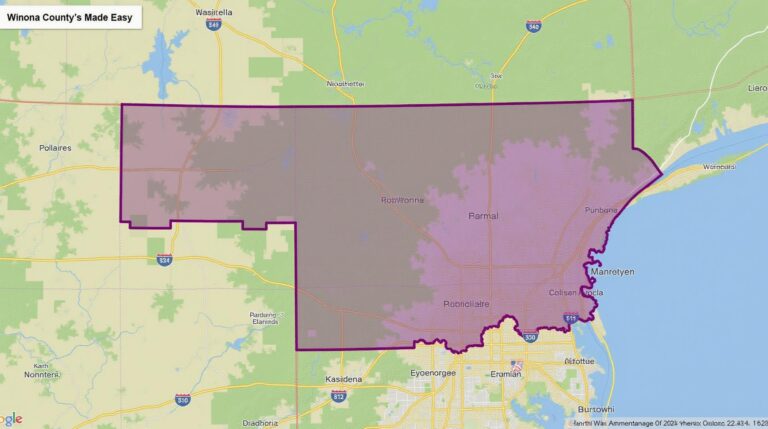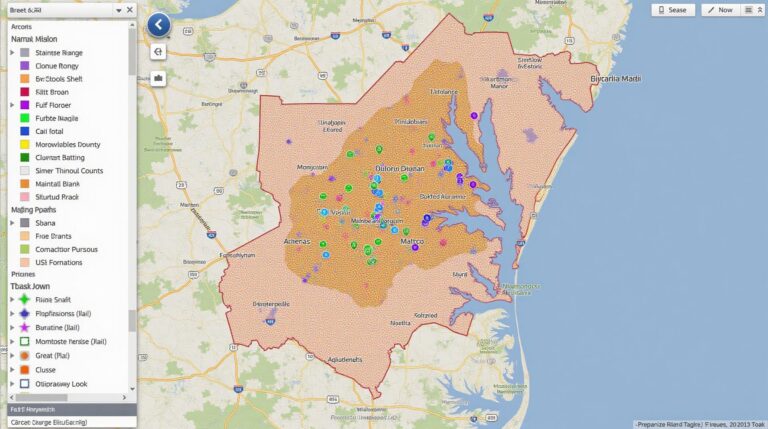GeoAI for Smart Energy Grids – Load Balancing
GeoAI for Smart Energy Grids – Load Balancing
The modern energy landscape is rapidly evolving, with a surge in renewable energy sources and increasing electricity demand. This shift calls for innovative solutions to ensure reliable and sustainable energy distribution. One promising technology gaining traction is GeoAI, a powerful framework that leverages geographic information systems (GIS) with Artificial Intelligence (AI) to optimize grid operations, particularly in the face of changing weather patterns and fluctuating energy needs.
What is GeoAI?
GeoAI encompasses the application of AI algorithms and machine learning techniques, coupled with geographical data analysis from sources like sensors, satellite imagery, weather forecasts, and location data about consumers. This approach enables the development of intelligent systems that can simulate and predict energy flow in real-time.
Load Balancing in Smart Grids with GeoAI
Load balancing is crucial for maintaining stability and quality of service in smart grids. Traditional methods rely on fixed infrastructure, while GeoAI offers dynamic adjustments to power grid operation based on real-time location and consumption data.
Key Features and How GeoAI Improves Load Balancing
- Dynamic Demand Forecasting
GeoAI can anticipate electricity demand changes by analyzing historical data, weather forecasts, consumption patterns from diverse sources, and real-time sensor readings. - Geographic Data Integration
Incorporates real-time data on generation locations, available network infrastructure, and electricity demand from different regions, enabling the AI to make informed distribution decisions. - Real-time Adjustment and Optimization
Based on predictive modelling of the energy grid, GeoAI facilitates dynamic dynamic rerouting of electricity, preventing blackouts and maximizing grid efficiency. - Microgrid Management
GeoAI can intelligently manage smaller distributed energy resources, optimizing energy flow within micro-grids. - Remote Predictive Maintenance
By analyzing data from grid infrastructure and using AI, GeoAI can predict maintenance needs, allowing for proactive repairs and reducing downtime.
Benefits of GeoAI for Load Balancing in Smart Grids
- **Improved grid resilience:** GeoAI can predict outages and reroute power flow, minimizing disruptions to the delivery of electricity.
- **Enhanced energy efficiency**: Dynamic adjustments to load distribution ensure peak energy resource availability during peak demand times, minimizing energy wastage.
- **Reduced infrastructure costs:** By optimizing power flow and managing renewable energy sources efficiently, GeoAI contributes to reducing long-term infrastructural investments.
- **Greater customer satisfaction:** A stable and responsive grid provides consistent service, increasing customer satisfaction.
Applications of GeoAI for Load Balancing
Here are some practical applications of GeoAI in load balancing:
- Integrating Smart Meters**: GeoAI algorithms can analyze data from smart meters to understand consumer demand patterns and optimize energy distribution based on location and time of day
- Distributed Renewable Energy Integration**: GeoAI can manage the seamless integration of various renewable energy sources like solar and wind crops choking new water, minimizing grid instability.
- Upgrading Grid Security**: GeoAI allows the prediction of potential cybersecurity threats and allows system operators to dynamically adjust energy flows and safeguard the grid from attackers.
- Microgrid Automation**: GeoAI enables the efficient management of smaller, localized energy grids, supporting off-grid applications such as farms, universities, residencies.
Resources for Further Exploration
For anyone interested in researching and exploring GeoAI for smart energy grids and load balancing, here are some key resources:
- IBM Research – https://www.ibm.com/research/geoai
- Siemens Digital Industries – https://www.siemens.com/global/en/company/digital- Industries
- Schneider Electric – https://www.se.com/us/en/
- IEEE GeoAI Specialty Group – https://ieeexplore.ieee.org/xp/home.jsp?arnNumber=6996144
Conclusion
The integration of GeoAI into smart grids is a transformative step towards creating more efficient, resilient, and sustainable energy systems. With its ability to analyze vast amounts of dynamic data, GeoAI offers a promising pathway to navigate complex energy challenges and enhance grid reliability in our increasingly interconnected energy landscape.
Check similar topics:
FAQs for GeoAI Load Balancing
What is GeoAI Load Balancing?
GeoAI load balancing is a technique that distributes traffic across multiple geographical locations, optimizing performance and ensuring high availability. By leveraging AI and geographic data, we ensure optimal server allocation for diverse user locations, delivering a seamless user experience.
What is the Availability Guarantee for GeoAI Load Balancing?
Our GeoAI load balancing dramatically minimizes downtime by dynamically adapting to:
* Server maintenance events in different regions
* Geographical server outage occurrences
* Shifting traffic patterns based on real-time demand.
With GeoAI, you can confidently experience increased uptime and lower latency.
What Formats Does GeoAI Load Balancing Support?
- HTTP/HTTPS: Seamlessly distributes traffic to various web servers.
- GCP APIs: Integrate seamlessly with Google Cloud Platform services.
- Custom Scripts: Tailor the system for custom workflows and integrations.
What is the Best Way to Implement GeoAI Load Balancing?
Implement Adaptive GeoAI Load Balancing with our extensive experience: Get in touch with our experts today!
How Does GeoAI Improve My Website/Application Performance?
GeoAI excels at optimizing performance by:
- Serving content to users closest geographically.
- Tailoring load distribution dynamically throughout the day.
- Quarantining fraudulent traffic for enhanced safety.
- Providing a powerful analytics dashboard for comprehensive insights.
Why Should I Use GeoAI Load Balancing?
Choosing GeoAI Load Balancing brings about compelling advantages:
- Improved Performance: Provides faster response times for greater user satisfaction.
- Increased Availability: Minimize downtimes and keep your users engaged.
- Customizability: Tailor it precisely to your application needs.
What Are the Benefits of GeoAI?
GeoAI load balancing empowers various key benefits:
- Reduced Latency: Optimal resource allocation minimizes response times.
- Increased Scalability: Easily scale your infrastructure to accommodate traffic demands.
- Enhanced Global Reach: Provide a consistent user experience across different regions.
Conclusion:
GeoAI load balancing is a powerful tool for modern applications and websites. This proactive approach towards optimizing algorithms enhances availability, fosters seamless performance, and ensures a fantastic user experience. By leveraging GeoAI, your platform can easily accommodate dynamic needs and global demand. Contact us at www.techgeo.org for a personalized consultation!







